The Palouse Prairie
The Palouse region
The region of southeastern Washington and adjacent Idaho that has rolling hills on deep
soils is known as the Palouse.
On its eastern border, this region is bounded by the forests of northern Idaho, and the
Snake River forms its southern boundary.
To the north and west, the Palouse is bounded by areas of flat terrain and shallow soils,
places where the deep soils were scoured away by ice or water during past glaciations or floods.
Some scientists use a more inclusive definition of the Palouse; they consider areas
to the west and south and even parts of northwestern Montana to be part of the Palouse.
![[Lithograph showing mid-nineteenth century landscape.]](stevens_lithograph.jpg)
This lithograph from the mid-nineteenth century shows how the Palouse
landscape looked to a member of an exploratory expedition.
(From I.I. Stevens, 1860. Reports of explorations and surveys, to ascertain the
most practicable and economical route for a railroad from the Mississippi
River to the Pacific Ocean. Made under the Secretary of War in 1853-5, 36th
Congress 1st Session, Senate Executive Document Part I, General Report.)
|
"Its beauty was wild and untrammeled and the undulating hills
were covered with luxuriant grasses."
-- Moscow homesteader, 1880s
|
![[Palouse rolling hills. Photo by A. Meyer.]](alison_meyer1.jpg)
Palouse rolling hills. (Photo courtesy of Alison Meyer.)
|
![[The Palouse; limit of maximum agreement. From H.H. Caldwell.]](caldwell_maximum.gif)
|
|
This map shows the boundaries of the Palouse according to different investigators.
A core area of
agreement extends north of the Snake River to Cheney, Washington, west almost
to the confluence of the Palouse and Snake Rivers, and east along a portion of
the Clearwater River. This is indicated by the stippled area on the figure. Some
investigators include considerable area to the west and south in the Palouse
Region, however.
(From H. H. Caldwell, 1961.
The Palouse in diverse disciplines.
Northwest Science 35:115-121.)
|
The typical vegetation of the Palouse
One hundred fifty years ago the typical vegetation throughout the Palouse consisted of
perennial bunchgrasses, which grew in tufts or clumps, accompanied by many
different kinds of "wildflowers."
Together, the grasses and flowers gave the appearance (in spring and early summer at least)
of a lush meadow, or Palouse Prairie.
This type of vegetation occurs in relatively moist environments,
where the climate is almost wet enough to support the growth of trees.
The principal bunchgrasses of Palouse meadows were
Idaho fescue,
bluebunch wheatgrass, and
prairie junegrass.
Short shrubs, especially
snowberry and
wild rose,
were common.
Mosses and lichens were an important but inconspicuous feature.
![[Silhouette of meadow steppe. From R. Daubenmire]](meadow_steppe_silhouette.gif)
|
|
Typical vegetation of the Palouse in silhouette.
Note that the bunchgrasses are accompanied by many species of wildflowers.
(From R. Daubenmire, 1970.
Steppe vegetation of Washington. Technical Bulletin 62.
Pullman, WA: Washington State University, College of Agriculture,
Washington Agricultural Experiment Station.)
|
![[Palouse prairie vegetation. Photo by A. Meyer.]](alison_meyer2.jpg)
Palouse prairie vegetation. (Photo courtesy of Alison Meyer.)
|
![[Kramer Prairie in the 1950's. Photo by R. Daubenmire.]](meadow_steppe_shrub_thickets.gif)
|
|
A typical Palouse Prairie, Washington State University's Kramer Prairie in the 1950s.
Note the shrub thickets.
(Photo by Rexford Daubenmire, courtesy of
Washington State University Libraries Manuscripts, Archives, and Special Collections.)
|
Examples of wildflowers that are common on the Palouse Prairie
Animals of the Palouse
The distinctive ecosystem called Palouse Prairie is more than just plants.
Wildlife was abundant.
Deer and elk fed on the Palouse Prairie plants, but bison were rare.
Small mammals such as ground squirrels, gophers, and voles were common.
Badgers, hawks, and owls fed on these prey species, and hummingbirds pollinated some of the
more brightly-colored flowers.
The Brewer's sparrow, which depends upon shrub thickets for nesting, was once
abundant in the Palouse, but it has become extremely rare and now must rely on
sagebrush stands outside of the region.
In the spring, huge flocks of the sharp-tailed grouse gathered on dancing grounds,
where male birds danced to attract females.
Many other important members of the Palouse Prairie community were less obvious.
A variety of insects played important roles pollinating flowers and dispersing seeds.
The environment below the surface of the soil also teemed with life.
Fungi, bacteria, algae, and invertebrates recycled matter,
breaking down the massive underground root systems of plants that died.
The activities of these organisms affected and were affected by soil fertility and
texture in complex ways.
Areas with especially deep, moist soils provided habitat for
giant earthworms that reached up to 3 feet in length!
These worms were found nowhere else in the world.
It is not known whether they still exist in the Palouse.
They have not been seen in recent decades, in spite of several attempts to find them.
The first people of the Palouse
Prior to Euroamerican settlement, the Palouse River drainage was inhabited primarily by the Palouse people.
The Nez Perce people spent much of their time in the southern part of the Palouse Prairie,
its northern fringes were used by the Coeur d'Alenes and Spokanes, and the Cayuses used the
area to the southwest.
These patterns were fluid, however, with much overlap between the different groups.
The annual cycle of hunting and gathering tracked seasonal changes in plant productivity.
The cycle began with gathering roots at low elevations in spring;
as the seasons progressed, plant and animal resources were harvested at progressively higher
elevations.
![[Indian woman with camas bulbs.]](woman_with_camas_bulbs.jpg)
|
|
Camas was an important staple in the diet of Native American peoples of the Palouse.
A portion of one season's camas harvest is shown here.
(Photo courtesy of the National Park Service, Nez Perce National Historical Park,
Spalding, ID. Photo Number NEPE-HI-0773.)
|
Special plant communities
Of course, on sites that had distinctive conditions because their soils were
unusually moist or dry or shallow, different plant communities occurred.
In places that were relatively dry (such as south-facing hillsides),
the bunchgrasses were not accompanied by a lot of wildflowers.
On more moist sites (such as north-facing hillsides), thickets of black or Douglas'
hawthorn or forests of ponderosa pine and perhaps Douglas-fir occurred.
Low-lying swales that were wet in spring supported dense stands of camas that
provided many important things to native people, including
large quantities of a nutritious food,
a stable source of food that could be stored for long periods of time,
an economically valuable resource controlled by women,
a place where people could gather in summer to socialize, and
a valuable item for trade.
Camas plants were so dense in the wet meadows that early explorers mistook
the masses of blue flowers for water.
In 1806 Meriwether Lewis wrote in his journal that the camas resembled
"a lake of fine clear water, so complete is this deseption that on first Sight I could have
sworn it was water."
![[Camas stand. Photo by R. Daubenmire]](camas_spangle.jpg)
|
|
Camas stand near Spangle, WA (a bit outside of the Palouse region).
(Photo by Rexford Daubenmire,
courtesy of
Washington State University Libraries Manuscripts, Archives, and Special Collections.)
|
The Palouse is not the only place where bunchgrasses dominate the potential natural vegetation.
Bunchgrass zones extend west to the Cascades, north into Canada, south into Utah, and east into Montana.
Bunchgrass communities that were similar in most respects to the Palouse Prairie communities
also occurred in the canyons of the Snake, lower Salmon, Imnaha, Grande Ronde, and Clearwater rivers.
Changes in land use
As anyone who lives in or has visited the Palouse knows, this landscape is both strikingly
beautiful and very useful.
Capable of producing impressive yields of grains and legumes, the Palouse has become one of
the most productive agricultural regions in the world.
But as the land has been put to use for agricultural purposes,
the native prairie and the plants associated with it have declined.
The Palouse has been dramatically altered within the last 150 years by agriculture,
and virtually all remaining examples have been invaded to some extent by aggressive alien
species, weeds that were either deliberately or accidentally introduced from the Old World.
Palouse Prairie is now considered one of the rarest ecosystems in the United States.
![[Map of historic and existing vegetation.]](fig10-6.gif)
|
|
Historic (circa 1900) and existing (circa 1990) vegetation.
(From
A.E. Black, E. Strand, P. Morgan, J. M. Scott, R. G. Wright, C. Watson. 1998.
Biodiversity and land-use history of the Palouse Bioregion: Pre-European to present.
Chapter 10 in T.D. Sisk, editor.
Perspectives on the Land Use History of North America: A Context for Understanding Our Changing Environment.
Biological Science Report USGS/BRD/BSR-1998-0003 (Revised September 1999).
U.S. Department of the Interior, U.S. Geological Survey, Biological Resources Division. 104 p.
Available online at http://biology.usgs.gov/luhna/chap10.html)
|
Weeds: the biggest threat
The native bunchgrasses of the Palouse do not have adaptations that make it easy for them to recolonize a site that has been cultivated.
So when the Palouse was cultivated, they were not in a good position to cope with the change.
As a result, the native grass species became less abundant.
The same thing is true for many species of wildflowers characteristic of the Palouse.
At about the time that the Palouse was cultivated, plants that were adapted to cultivation arrived in the region.
These included many species of exotic grasses and wildflowers native to the Eurasian region.
These species evolved in agricultural regions, and consequently they have developed the ability
to germinate on areas of bare soil that are exposed after cultivation.
For instance, the grasses
cheatgrass or
downy brome,
medusahead, and
wild oats
and broad-leafed plants such as
oxeye daisy,
Canada thistle,
field bindweed (morning glory), and
teasel
became more abundant at the expense of the native Palouse Prairie plants.
Now that these introduced weeds are present throughout the region, any disturbance that results
in the creation of bare areas provides sites that can readily be colonized by these troublesome invaders.
What can you do to protect and preserve Palouse Prairie?
If you own land containing a prairie remnant,
you are in a position to help preserve these special places.
You can do so through a voluntary conservation agreement, or
easement,
in which you set restrictions on the future development of your land.
- These agreements are entirely voluntary.
- You may qualify for tax breaks if you set up such an agreement.
- You can customize your easement to fit the particular needs of your family and your situation.
- You can receive assistance with your easement from the Palouse Land Trust.
For more information about conservation easements and the tax advantages they confer, contact
If you do not own a prairie remnant,
you can still help in the effort to preserve our natural heritage.
You can do so by:
- contributing to a local organization concerned with prairie preservation, such as:
-
Palouse Prairie Foundation,
PO Box 8952
Moscow, ID 83843
ppf @ palouseprairie.org
www.palouseprairie.org
-
Palouse-Clearwater Environmental Institute
PO Box 8596
Moscow, ID 83843
(208) 882-1444
pcei @ pcei.org
www.pcei.org
-
Idaho Native Plant Society, White Pine Chapter
PO Box 8481
Moscow, ID 83843
www.idahonativeplants.org
- volunteering to help restore native prairie vegetation and manage prairie remnants.
Volunteers are often needed to collect seeds, raise plants, and control weeds.
For more information contact
Palouse Prairie Foundation or
Palouse-Clearwater Environmental Institute.
If you are interested in restoring native Palouse Prairie vegetation on your land,
you have a fascinating challenge in store.
Regardless of whether you have a small yard or acres of land,
growing native Palouse Prairie plants can be very rewarding, but it is also tricky,
and under some circumstances, it can actually create problems for native plants.
For these reasons, you should discuss your particular situation with someone
knowledgeable about Palouse Prairie restoration before you begin.
For more information, contact the Palouse Prairie Foundation.
|
Acknowledgments
Creation of this display was funded by a Community Challenge Grant from the
Idaho Department of Fish and Game.
Citation
Palouse Prairie Foundation, 2002.
The Palouse Prairie.
Moscow, ID: Palouse Prairie Foundation.
www.palouseprairie.org
October 19, 2002
![[Lithograph showing mid-nineteenth century landscape.]](stevens_lithograph.jpg)
![[Palouse rolling hills. Photo by A. Meyer.]](alison_meyer1.jpg)
![[The Palouse; limit of maximum agreement. From H.H. Caldwell.]](caldwell_maximum.gif)
![[Silhouette of meadow steppe. From R. Daubenmire]](meadow_steppe_silhouette.gif)
![[Palouse prairie vegetation. Photo by A. Meyer.]](alison_meyer2.jpg)
![[Kramer Prairie in the 1950's. Photo by R. Daubenmire.]](meadow_steppe_shrub_thickets.gif)

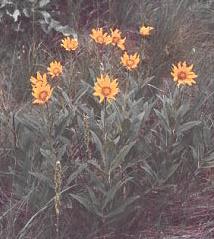
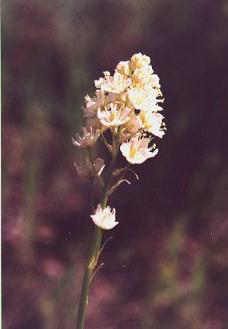

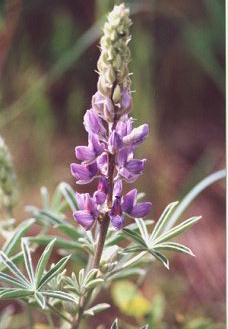
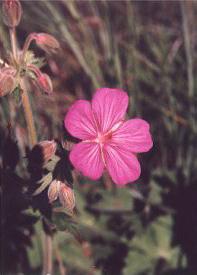
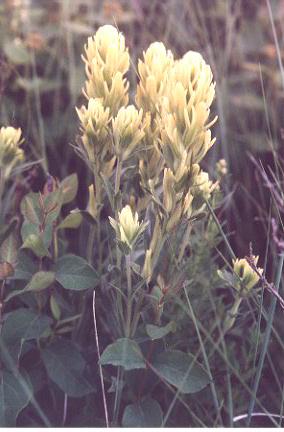
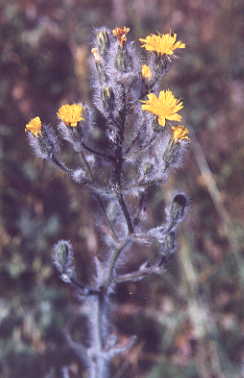
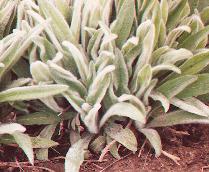
![[Indian woman with camas bulbs.]](woman_with_camas_bulbs.jpg)
![[Camas stand. Photo by R. Daubenmire]](camas_spangle.jpg)
![[Map of historic and existing vegetation.]](fig10-6.gif)